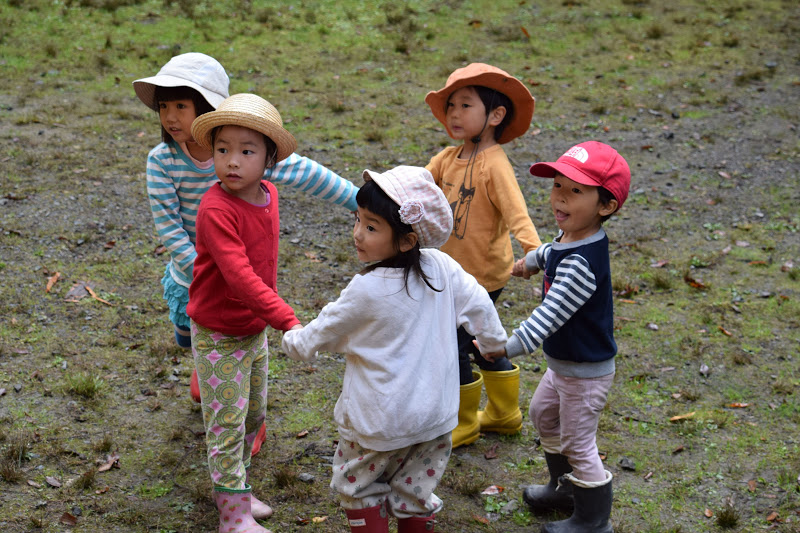実施日 : 2016年10月14日(金) - 15日(土)
Notice: Tottori Press Tour
投稿日 : 2016年09月20日
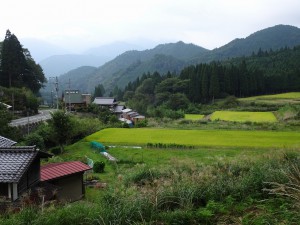
The Least Populated Prefecture in Japan Aiming to Become No. 1 in Japan for Permanent Relocation
With a population of 574,000, Tottori has the smallest population of any prefecture in Japan. From FY 2009-2014, 4,344 people permanently relocated to “Japan’s smallest prefecture,” more than to any other prefecture. The prefecture has also set a target of 6,000 people relocating there over the five years from FY 2015-2019. During FY 2015, 1,952 people relocated to Tottori prefecture, the most yet. Over 70% of them were under 40 years old, with most of them relocating for work, marriage, or to raise children. In addition to the prefecture having plentiful nature to make it appealing as a place to raise children, it is also among the first prefectures in Japan to implement policies to support families raising children such as free daycare and small class sizes. Thanks to these policies, the total fertility rate for the prefecture in 2015 was 1.69 (4th in Japan). The birth rate also increased for 2015.
Thanks to the prefecture’s proactive support, unique businesses have established branches within the prefecture, creating employment and becoming a driving forceto stimulate the prefecture’s economy. Municipalities in Tottori have been ranked No. 1 in national rankings in the media for livability and for most popular rural area to live in. Tottori prefecture is gaining attention from around Japan as an excellent candidate for relocation due to its positive environment for work, raising children, and activities.
World Trails Conference Being Held in Japan for the First Time as Tottori Prefecture Promotes Walking
The World Trails Conference (WTC) is a gathering of leisure industry professionals from around the world who use trails as resources for tourism and for health benefits. The first five conferences were held in South Korea, but in October this year the sixth conference will take place in Tottori prefecture. To coincide with this international conference, an event is also being held to encourage the general public to walk some of Tottori’s walking and trekking courses with beautiful views of the ocean and historical cities. With many Tottori residents owning cars, the prefecture is ranked among the lowest in Japan for the number of steps taken daily. In response, the prefecture has been promoting walking for health benefits, creating a walking map and holding walking events.
This tour will visit Tottori prefecture during the WTC so to see the prefecture’s natural beauty and cover policies to encourage new residents to permanently relocate and efforts by local businesses working to create employment and stimulate the economy.
*This press tour is sponsored by the Tottori Prefecture Government Tokyo Office, with planning cooperation by the FPCJ.
*This press tour will require participants to bear part of the cost, but is not a profit-making venture.
[Tour Details]
1. Interview with Governor Shinji Hirai
 -The Least Populated Prefecture in Japan Aiming to Become No. 1 in Japan for Permanent Relocation
-The Least Populated Prefecture in Japan Aiming to Become No. 1 in Japan for Permanent Relocation
-World Trails Conference being held in Japan for the first time as Tottori Prefecture Promotes Walking
Now in his third term, when Governor Shinji Hirai was first elected in 2007 the population of Tottori prefecture had dropped below 600,000, and so he began measures to promote relocation to Tottori, such as providing support for working in agriculture and using empty homes for “trial homes” when relocating. With depopulation a serious issue for the prefecture, the governor is known for making humorous comments about the situation, and helping to attract people to Tottori.
As a policy to support families raising children, Tottori was the first prefecture in Japan to provide free daycare starting with the third child of a family, regardless of income and with no age limitations for the parents, as well as free daycare for the second child of low-income households, and also expanded the applicable range of healthcare subsidies. The fact that there were no children on a waiting list for daycare facilities is also a very attractive feature for young families.
 The decision to hold the WTC in Tottori started with Mirai, an NPO based out of Kurayoshi in the central part of the prefecture and using walking events to stimulate the economy, campaigning for the WTC to be held there. Mirai and other organizations are involved in efforts to make Kurayoshi into a “walking resort” to stimulate the local economy, creating walking courses and turning them into tourism products and running a walking café that also provides information.
The decision to hold the WTC in Tottori started with Mirai, an NPO based out of Kurayoshi in the central part of the prefecture and using walking events to stimulate the economy, campaigning for the WTC to be held there. Mirai and other organizations are involved in efforts to make Kurayoshi into a “walking resort” to stimulate the local economy, creating walking courses and turning them into tourism products and running a walking café that also provides information.
Governor Hirai will discuss the success of policies to encourage relocation, future plans, and expectations for the WTC. Mr. Hiroaki Kishida, director of Mirai, will give an overview of the WTC, followed by attending the WTC opening ceremony. After going to another stop in Kurayoshi, the tour will walk around Nariishi-no-hama in Kotoura, one of the walking resorts, to film and photograph it.
2. Marutanbo Forest Kindergarten
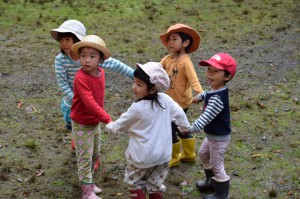 -An appealing environment for raising children, a kindergarten in natural surroundings
-An appealing environment for raising children, a kindergarten in natural surroundings
Forest kindergartens are a concept from Denmark focusing on letting children spend time in nature. Chizu, a town in the southeast of Tottori prefecture with forest accounting for 93% of its total area, Marutanbo [maruta=log] Forest Kindergarten isn’t located in a building. It is a non-registered day care facility unique for the adults giving almost no directions to the children, who are free to play in the forest. The kindergarten was established in 2009 by members including Ms. Saeko Nishimura, from Tokyo, and together with a second kindergarten Sugibokkuri that opened in 2013, 41 children attend the kindergartens, including 19 who are children of people who relocated to the area from elsewhere. Ms. Nishimura’s husband was from Tottori, and when she moved there and worked for the prefecture in an office dealing with Chizu, she fell in love with the town’s bountiful nature. That is when she realized that her children would benefit more from playing, eating, and sleeping in this environment, which would in turn allow her to be confident and relaxed as they grew up. Wanting to let others know about the possibility of raising children in the plentiful nature of Chizu, Marutanbo was opened with the cooperation of the local governments.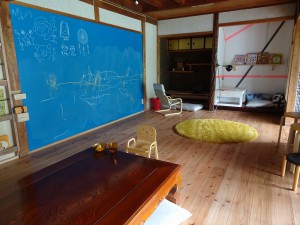 In August of this year, a share house was completed, acting as temporary housing for people interested in sending their children to the kindergarten, providing a place to share information as they look for a place to live. One family is currently staying at the share house. Every year, around 10 families come to see the kindergarten, but over half of them give up due to being unable to find a place to live. Considering this situation, Ms. Nishimura is working to make it easier for people to move to Chizu: “Just like there are paths set up for people to move to the big city, I would like to create a path for the reverse so people can return to rural areas.”
In August of this year, a share house was completed, acting as temporary housing for people interested in sending their children to the kindergarten, providing a place to share information as they look for a place to live. One family is currently staying at the share house. Every year, around 10 families come to see the kindergarten, but over half of them give up due to being unable to find a place to live. Considering this situation, Ms. Nishimura is working to make it easier for people to move to Chizu: “Just like there are paths set up for people to move to the big city, I would like to create a path for the reverse so people can return to rural areas.”
In addition to filming and photographing the Marutanbo Forest Kindergarten, with children playing in the forest, the tour will speak with Ms. Saeko Nishimura about why she started Marutanbo and what her plans for the future are. The tour will also visit the share house to speak with the family considering moving to Chizu.
3. Lassic Co., Ltd.
-An IT company allowing staff to work how they like in rural areas
Lassic is an IT company with three main businesses: developing business support and web service systems; consulting for local governments on stimulating local economies; and research and development for emotional analysis based one people’s voices and expressions. Founder and Vice-President Tomohiro Nishio returned to Tottori from Tokyo, and started the company in 2006 as a place where people could work in a way that fit their lifestyle and life stage. One of the employees only comes in two or three days a week during the summer, and spends the rest of the week as a canoe instructor. The company’s management philosophy is “stimulating local economies with IT, from Tottori.” By splitting up IT work which tends to be heavily concentrated in Tokyo and allowing engineers to work in locations they love in a manner they like, the company is helping stimulate rural areas. Lassic has engineers in eight locations around the country, including Okayama and Sendai, working on jobs commissioned from major companies in big cities. The company aims to increase their number of rural offices for engineers to 50 locations by 2020, and increase the number of employees from 120 to 1,000.
The tour will visit the Lassic head office in Tottori, and speak with company representatives about the concept of “stimulating local economies with IT, from Tottori,” as well as interviewing employees about how they are working in ways that fit their lifestyle.
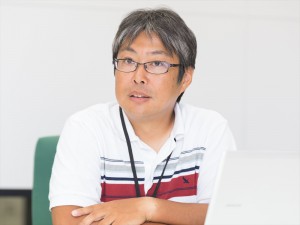

4. Good Smile Company Rakutsuki Factory
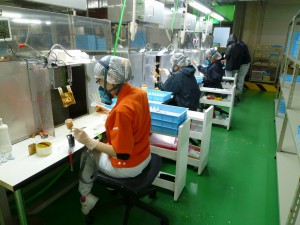 -The birth of a new site for pilgrimage in “Manga Kingdom Tottori”
-The birth of a new site for pilgrimage in “Manga Kingdom Tottori”
Figures are a major part of Japanese subculture, and Good Smile Company is well known by collectors. Their Nendoroid series of figures made with small bodies and large heads (a 2.5:1 ratio of body: head) based on anime, game, and other characters are popular with fans worldwide. The company’s first domestic factory, Rakutsuki Factory in Kurayoshi, Tottori, began operation in 2014. Until that point, all manufacturing had been done in China, but due to a lack of qualified personnel and an increasingly complicated manufacturing process, the decision was made to open a factory in Japan. As Tottori was already working on encouraging tourism and industry based on manga in the prefecture, branding itself as Manga Kingdom Tottori, when Good Smile Company was looking for a place to make their factory, Tottori was very interested in being chosen. As a result, the decision was made to make the factory in Kurayoshi, which was already an industrial area with mold makers and other factors necessary for making figures. The Rakutsuki Factory employs 92 people, and some relocated to work there.
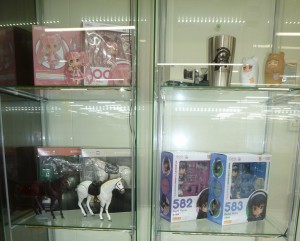
In addition to creating jobs, Good Smile Company opened a store in the city, benefitting the local economy. The company is working actively to participate in the community and attract tourists, having one of their characters participate in the Kurayoshi Utsubuki festival, and releasing a product with one of their popular Nendoroid characters holding the local delicacy Utsubuki dango [sweet dumplings].
The tour will visit the Good Smile Company Rakutsuki Factory, where factory manager Mr. Tanimoto will explain the background behind setting up the factory and their relations with the local community. Afterwards, there will be an opportunity to film and photograph the factory (only in allowed areas).
5. Kohoen Social Community Service
-Striving for high-quality nursing care service in a super-aged society
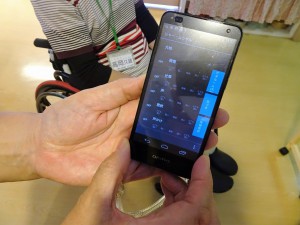 Kohoen operates nursing homes and geriatric care facilities in cities in Tottori such as Sakiminato and Yonago as well as in Tokyo, with over 120 locations and annual sales of 12 billion yen. As an innovator in the nursing care industry, Kohoen applies feedback from its users in order to improve the quality of its nursing care. As a result, the company has won awards such as the Japan Quality Award and High Service Japan 300 award for revolutionary management policies from the user’s point of view and for innovative services. One unique initiative is the Yuririn, a urine measurement device that can quantify the amount of urine in the bladder, so that staff can ensure diapers remain comfortable or can encourage users to go to the bathroom when they are only sleeping lightly, thereby improving the quality of sleep. They will soon be introducing a system using smartphones that enables users to record how satisfied they are quantifying nursing care. After staff speak with users or provide a service such as bathing them, the user’s response will be input into the smartphone. This evaluation will be displayed for each user and for each staff member, in order to help show what services each user likes, and whether users have different reactions to the same service provided by different staff. By accumulating this kind of data for analysis as big data, it will be useful to improve the care provided and for training staff, and for preventing nursing staff from leaving the industry, which suffers from a lack of qualified workers.
Kohoen operates nursing homes and geriatric care facilities in cities in Tottori such as Sakiminato and Yonago as well as in Tokyo, with over 120 locations and annual sales of 12 billion yen. As an innovator in the nursing care industry, Kohoen applies feedback from its users in order to improve the quality of its nursing care. As a result, the company has won awards such as the Japan Quality Award and High Service Japan 300 award for revolutionary management policies from the user’s point of view and for innovative services. One unique initiative is the Yuririn, a urine measurement device that can quantify the amount of urine in the bladder, so that staff can ensure diapers remain comfortable or can encourage users to go to the bathroom when they are only sleeping lightly, thereby improving the quality of sleep. They will soon be introducing a system using smartphones that enables users to record how satisfied they are quantifying nursing care. After staff speak with users or provide a service such as bathing them, the user’s response will be input into the smartphone. This evaluation will be displayed for each user and for each staff member, in order to help show what services each user likes, and whether users have different reactions to the same service provided by different staff. By accumulating this kind of data for analysis as big data, it will be useful to improve the care provided and for training staff, and for preventing nursing staff from leaving the industry, which suffers from a lack of qualified workers.
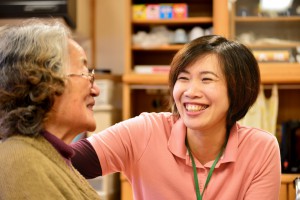 Mrs. Syah Musiyar came to Japan from Indonesia in 2009 under the Japan-Indonesia Economic Partnership Agreement, and became a certified care worker, studying Japanese while training. Her family has now also moved from Indonesia to join her in Japan. Mrs. Syah Musiyar has won a national contest of nursing care skills held by Kohoen, and has gained the trust of the rest of the staff as a valuable member of the team. Currently, she is working towards gaining certification as a care manager.
Mrs. Syah Musiyar came to Japan from Indonesia in 2009 under the Japan-Indonesia Economic Partnership Agreement, and became a certified care worker, studying Japanese while training. Her family has now also moved from Indonesia to join her in Japan. Mrs. Syah Musiyar has won a national contest of nursing care skills held by Kohoen, and has gained the trust of the rest of the staff as a valuable member of the team. Currently, she is working towards gaining certification as a care manager.
The tour will visit the Yonago Kohoen nursing home, and have the opportunity to learn about the Yuririn and efforts to improve the quality of nursing care through quantificatioin using smartphones. There will also be an interview with Mrs. Syah Musiyar.
[Tour Itinerary]
1. Itinerary:
|
[Day 1: Friday, October 14, 2016] |
|
|
6:40-7:55 |
ANA293 Haneda-Tottori* |
|
8:45-10:05 |
Lassic Co., Ltd. |
|
11:05-11:20 |
Marutanbo Forest Kindergarten part 1 |
|
12:05-13:00 |
Lunch |
|
15:15-16:45 |
Marutanbo Forest Kindergarten part 2 |
|
18:30-20:30 |
WTC reception |
|
|
Stay in Kurayoshi |
|
[Day 2: Saturday, October 15, 2016] |
|
|
8:25-10:20 |
Covering WTC including interview with Tottori Governer |
|
10:40-11:40 |
Good Smile Company Rakutsuki Factory |
|
13:05-13:35 |
Nariishi-no-hama |
|
14:55-16:25 |
Yonago Kohoen |
|
17:40-19:10 |
ANA 388 Yonago-Haneda |
(The schedule may be changed due to weather or other unforeseen circumstances.)
2. Qualification: Bearer of Gaimusho Press Registration Card
3. Cost: 10,000 yen per person including transportation accommodation and meal (FPCJ will later inform the participants of methods for payment, cancellation fee, etc.)
*Those who wish to stay at the airport hotel on Thursday night, the cost will be covered by the organizer.
4. Participants: Limited to 10 applicants (Only one reporter and one photographer from each company, but two participants from each TV team will be acceptable.)
*If the number of applicants exceeds 10, an upper limit may be set on the number of participants from each country/region.
5. FPCJ Contact: Ms. Yokota (Tel: 03-3501-3405)
6. Remarks:
(1) There may be some restrictions on photographing and filming at the tour sites. Please follow the instructions of the officials on duty.
(2) Tottori Prefectural Government Tokyo Office and FPCJ will not be liable for any inconvenience, trouble or accidents that might occur during the tour.

